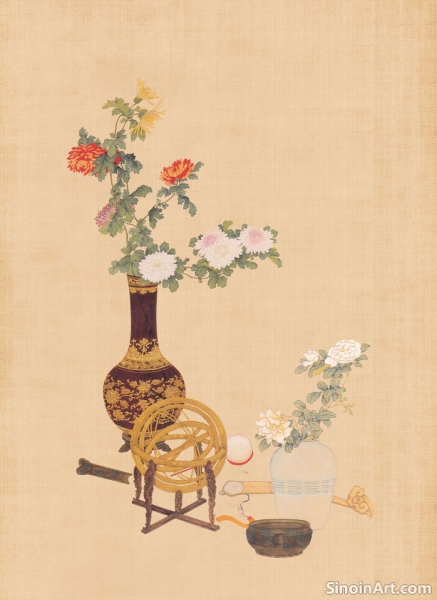The Influence of Gongbi on Contemporary Art
|
While rooted in tradition, Gongbi painting has also exerted a noticeable influence on contemporary art practices, both within China and internationally. Its emphasis on precision, detail, and the layering of color has inspired artists working in a variety of mediums, leading to interesting adaptations and interpretations of the style.  One of the key areas of influence is the resurgence of interest in traditional techniques and materials. Many contemporary artists are looking back to the masterful methods of Gongbi, incorporating these into their own work. This has led to the revival of certain skills that were in danger of being lost, bridging the gap between past and present. It's a rediscovery of old ways of creating beauty.  Beyond literal adoption, Gongbi's focus on meticulous detail and refined aesthetics has inspired a range of artistic approaches. We see this in the painstaking processes used by some artists, creating elaborate works that are characterized by the precise application of color and texture. This is evident in not just painting, but in sculpture, ceramics and other mediums.  The symbolic language inherent in Gongbi has also resonated with contemporary artists, many of whom use this as a platform for exploring modern themes and issues. The symbolism becomes a way to infuse contemporary narratives with deeper cultural significance, creating a powerful fusion of the old and the new. It gives modern artwork a sense of history. Gongbi’s influence is also being felt on a global scale. Artists from diverse cultural backgrounds are drawn to its unique approach to detail and realism, interpreting it through their own artistic lenses. This cross-cultural dialogue is pushing the boundaries of Gongbi and traditional art, proving its continuing relevance in an increasingly interconnected world. This has been achieved by both foreign artists learning these methods, and traditional Gongbi artists incorporating global art trends. |
Tag : Gongbi influence, contemporary Chinese art, traditional techniques in art, modern art and tradition, art fusion
Related information
- Gongbi vs. Xieyi: Understanding the Two Pillars of Chinese Painting
- The Role of Line in Gongbi: The Foundation of Precision
- Techniques and Tools: Unveiling the Secrets of Gongbi
- Gongbi and the Art of Botanical Illustration
- Gongbi Painting in the Modern Era: Reinterpretations and Adaptations
This article contrasts Gongbi painting with Xieyi painting, highlighting the differences in their techniques, brushwork, use of color, and overall artistic goals within the landscape of Chinese painting traditions.
Explores the critical role of line in Gongbi painting, detailing different types of lines and their contribution to the precision and expressiveness of the art.
An in-depth look at the techniques and tools used in Gongbi painting, covering brushes, ink, pigments, and painting surfaces.
This article explores the relationship between Gongbi painting and botanical illustration, highlighting the meticulous detail, precise linework, accurate color layering, and how these techniques contribute to both artistic beauty and scientific accuracy in the depiction of plants.
Discusses the reinterpretations and adaptations of Gongbi painting in the modern era, highlighting new themes, techniques, and the blending of tradition with contemporary sensibilities.